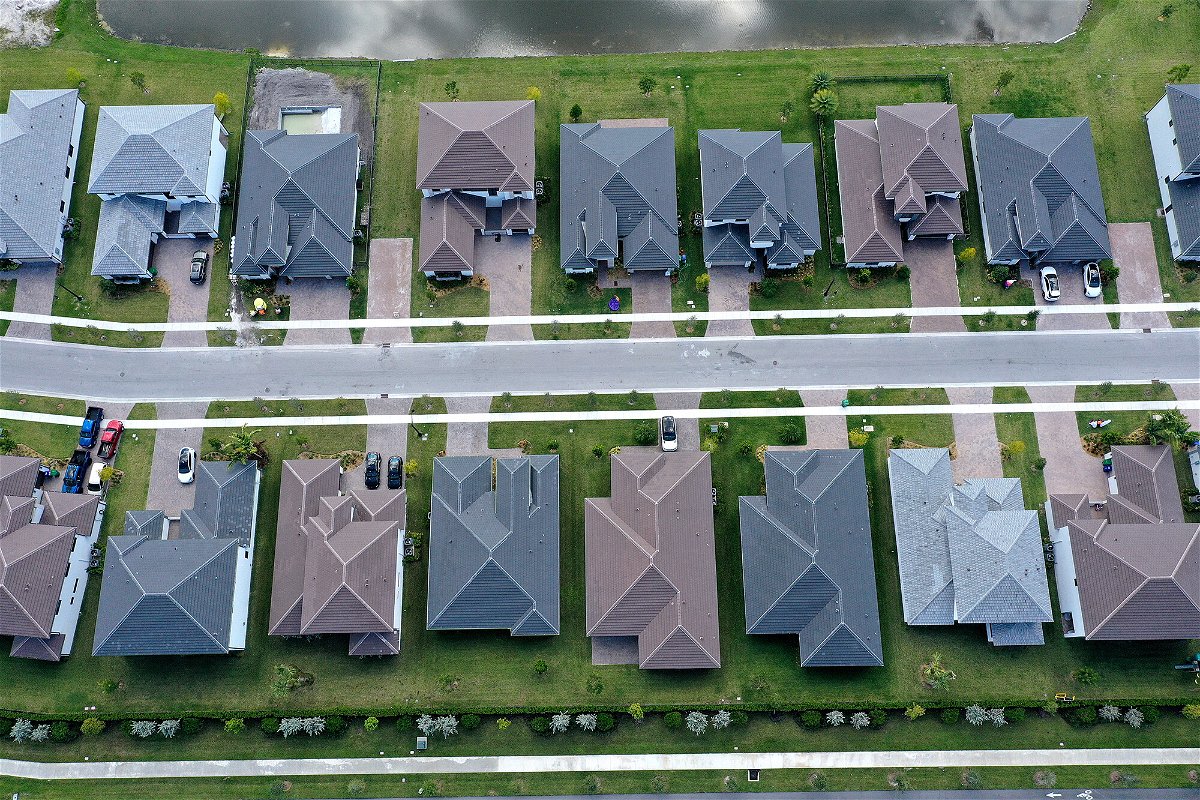Mortgage rates dip back below 7%

Mortgage rates fell below 7% this week. Pictured is a residential neighborhood on October 27
By Anna Bahney, CNN Business
Mortgage rates fell this week after surpassing 7% for the first time in 20 years last week.
The 30-year fixed-rate mortgage averaged 6.95% in the week ending November 3rd, down from 7.08% the week before, according to Freddie Mac. A year ago, the 30-year fixed rate stood at 3.09%.
Mortgage rates continue to hover around 7%, causing the once-hot housing market to cool considerably, said Sam Khater, Freddie Mac’s chief economist.
The 30-year fixed rate had risen almost every week since late August and has more than doubled since the beginning of the year.
The rapid rise has been fueled by the Federal Reserve’s unprecedented campaign of hiking interest rates in order to tame soaring inflation. The combination of the central bank’s rate hikes, investor’s concerns about a recession and mixed economic news has made mortgage rates increasingly volatile over the past several months.
The Fed announced yesterday it would raise its benchmark interest rate by another 75 basis points, the sixth rate increase this year and the fourth-consecutive hike of that size.
“Yesterday’s interest rate hike by the Federal Reserve will certainly inject additional lead into the heels of the housing market,” Khater said.
He added that demand is declining as some potential buyers try to navigate the unpredictable landscape, while others remain sidelined because they cannot qualify for a loan.
Inflation remains a challenge
Following the Fed’s meeting on Wednesday, Chairman Jerome Powell said that the possibility of a “soft landing,” in which the economy cools without crashing into a recession, has narrowed but it is still possible.
“The inflation picture has become more and more challenging over the course of this year,” he said. “That means we have to have policy be more restrictive, and that narrows the path to a soft landing.”
While the Fed does not set the interest rates borrowers pay on mortgages directly, its actions influence them. Mortgage rates tend to track the yield on 10-year US Treasury bonds. As investors see or anticipate rate hikes, they make moves which send yields higher and mortgage rates rise.
Both two-year and 10-year Treasury yields rose higher in the wake of Wednesday’s announcement, a sign that capital markets see a rising probability of recession in 2023, said George Ratiu, Realtor.com’s manager of economic research.
“With inflation still running at a 40-year high and the Fed expecting a few more rate increases to combat it, mortgage rates will experience upward pressure through the end of 2022,” said Ratiu.
Rates moved lower over the past week because yesterday’s Fed announcement was already priced into the mortgage market, said Lawrence Yun, chief economist at the National Association of Realtors. But inflation is not where the Fed would like it to be yet and rates are expected to remain volatile.
“Mortgage rates are near 20-year highs, and that hurts homebuyers,” said Yun. “Once inflation is contained, mortgage rates will start to drift lower. It may be another year or two before that happens.”
More people priced out
As rates rise, homeownership becomes increasingly out of reach for people who can’t afford, or don’t even qualify for a home loan.
With mortgage rates about 4 percentage points higher than last year, a buyer of a median-priced home is looking at a monthly mortgage payment that is $1,000 higher, according to Realtor.com.
“This dramatic jump in financing costs has effectively shrunk most buyers’ budgets,” said Ratiu.
It isn’t just mortgage rates that have gone up from last year, home prices have significantly increased as well.
Based on September 2021’s median home price and 30-year fixed mortgage rate, and assuming a 20% down payment, a typical homebuyer would have been looking at a $1,296 monthly payment, according to Realtor.com. This year, due to both higher prices and mortgage rates that are hovering around 7%, a typical buyer is facing a $2,296 monthly payment.
In order for this year’s buyer to have the same monthly payment as last year, the median home price would have to decline by 45%, to about $235,000.
Prices aren’t dropping that much, but they are starting to creep down in some areas.
“Most homes are priced based on comparable properties that sold in the past six months, a period which does not capture today’s much-higher rates and buyers’ inability to afford them,” said Ratiu. “With household incomes lagging inflation and borrowing costs still rising, we can expect transactions to continue declining, and prices to continue to fall.”
The-CNN-Wire
™ & © 2022 Cable News Network, Inc., a Warner Bros. Discovery Company. All rights reserved.